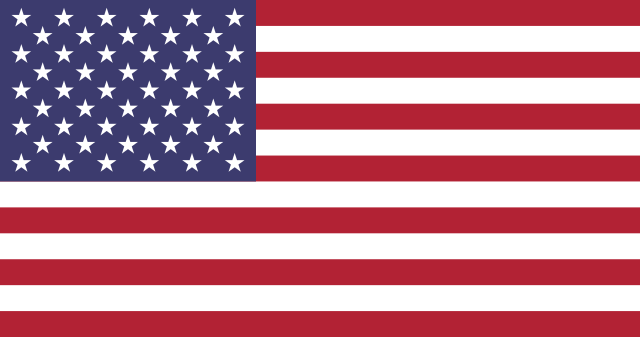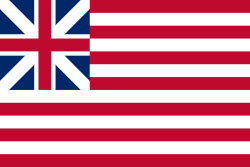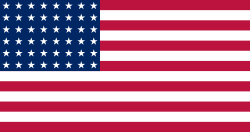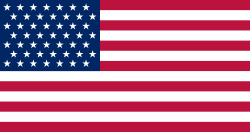Flag of the United States
national flag of the United States of America From Wikipedia, the free encyclopedia
Remove ads
The flag of the United States of America is a national flag. It has 7 red stripes and 6 white stripes. These 13 stripes represent the original thirteen colonies. The flag also has a blue canton, a rectangle in the top left corner. There are 50 stars which represent the 50 states of America.[1]

When a new state joins the United States, a new flag is made with an extra star. The new flag is first flown on the 4th of July (Independence Day).[2]
The last states to join the United States were Alaska and Hawaii in 1959. Alaska joined on 3 January 1959, so the new flag with 49 stars was used from 4 July 1959. Hawaii joined on 21 August 1959, so the flag[3] with 50 stars that is used today was not flown until 4 July 1960.
The colors in the flag are red, white and blue. The colors have no special meaning in the flag, but in the coat of arms, white stands for purity and innocence, red for bravery and strength, and blue for watchfulness, perseverance and justice.
The flag is also often called the Stars and Stripes, the Star-Spangled Banner, or Old Glory. The national anthem of the United States is a reference to the flag.[4]
Remove ads
Evolution of the United States' flag
Since 1818, a star for each new state has been added to the flag on the Fourth of July immediately following each state's admission. In years in which multiple states have been admitted, the number of stars on the flag has jumped correspondingly. The greatest example so far was in 1890, when five states were admitted within the span of a single year (North Dakota, South Dakota, Montana, and Washington in November 1889 and Idaho on 3 July 1890). This change has typically been the only change made with each revision of the flag since 1777, with the exception of changes in 1795 and 1818, which increased the number of stripes to 15 and then returned it to 13, respectively.[source?]
As the exact pattern of stars was not specified prior to 1912, and the exact colors not specified prior to 1934, many of the historical U.S. national flags (shown below) have had varied designs.[source?]
 1775–1777 (the "Grand Union Flag")
1775–1777 (the "Grand Union Flag") 1795–1818 (the "Star-Spangled Banner")
1795–1818 (the "Star-Spangled Banner")
Remove ads
International and space transportation of (woven) flags
One flag was transported to the lunar surface during the first manned flight to the moon.
On 30 April 1975 the last group of (eleven) US soldiers leaving the Vietnam War did grab the US flag [of their Marine Corps unit of embassy guards ] from the outpost on the embassy roof, before all were lifted off the roof and flown out of the country by a helicopter of the Marine Corps.[5] (That flag is in the United States.)[5]
Remove ads
Design
- 13 horizontal red and white stripes, representing the original 13 states.
- 50 white stars on a blue rectangle in the top-left, representing the current 50 U.S. states.
References
Wikiwand - on
Seamless Wikipedia browsing. On steroids.
Remove ads




























